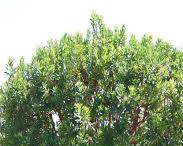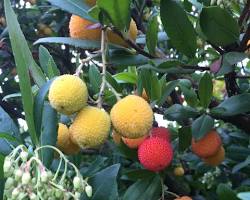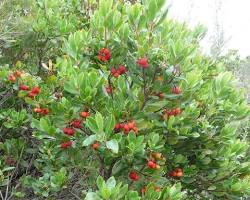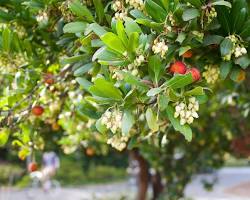Strawberry timber (Arbutus unedo) are lovely evergreen trees or shrubs which can be native to the Mediterranean location. They are recognised for her smooth green leaves, clusters of white or crimson vegetation, and brilliant purple fruit. Strawberry trees are a popular choice for landscaping and home gardening, however many humans wonder how huge they get.
The size of a strawberry tree relies upon on a number of things, such as the cultivar, weather, soil, and sunlight conditions. In general, strawberry trees grow to a top of eight-18 ft (2.5-5.5 meters) and a width of eight-20 feet (2.5-6 meters). However, a few strawberry bushes can end up a good deal taller, up to 50 ft (15 meters) tall.
In this blog post, we are able to speak the factors that affect the scale of a strawberry tree and offer a few pointers for developing a massive strawberry tree. We can even characteristic quite a few photographs of strawberry trees of different sizes.
What is a strawberry tree?
A strawberry tree (Arbutus unedo) is an evergreen tree or shrub this is local to the Mediterranean area. It is likewise called the Killarney arbutus, Irish strawberry tree, or madrone. Strawberry timber are recognised for his or her beautiful pink fruit, which resembles strawberries. The fruit is edible, but it isn’t as sweet or flavorful as proper strawberries.
Strawberry bushes normally develop to a peak of 8-18 feet (2.5-five.Five meters) and a width of 8-20 feet (2.5-6 meters). They have a dense, rounded crown and darkish inexperienced, leathery leaves. Strawberry trees produce clusters of white or red flowers inside the fall, and the fruit ripens within the following fall.
Why are strawberry trees popular?
Strawberry timber are famous for a number of motives. They are pretty low-protection and might tolerate a whole lot of climate and soil conditions. They are also drought-tolerant and deer-resistant. Strawberry timber are also an excellent source of meals and shelter for flora and fauna.
In addition to their ornamental fee, strawberry trees also are cultivated for his or her fruit. The fruit can be eaten clean, cooked, or made into jams, jellies, and different preserves. The fruit also can be used to make a Portuguese liqueur referred to as medronho.
Here are a number of the particular motives why strawberry trees are popular:
- Ornamental value: Strawberry trees are stunning trees with darkish green leaves, clusters of white or red flora, and vivid red fruit. They can be used as a specimen tree, a hedge, or a border planting.
- Low-maintenance: Strawberry trees are tremendously low-preservation timber. They do not require a number of water or fertilizer, and they’re no longer liable to many pests or sicknesses.
- Adaptability: Strawberry trees can tolerate lots of weather and soil situations. They can grow in complete sun or partial shade, and they can tolerate a few drought.
- Wildlife cost: Strawberry trees are a good source of food and shelter for natural world. The fruit is eaten by way of birds, squirrels, and different animals, and the dense foliage offers nesting and hiding places.
- Edible fruit: Strawberry tree fruit is fit to be eaten, and it can be eaten clean, cooked, or made into jams, jellies, and different preserves. The fruit can also be used to make a Portuguese liqueur referred to as medronho.
Overall, strawberry trees are a popular preference for landscaping and domestic gardening. They are beautiful, adaptable, and occasional-protection bushes that offer a number of blessings.
How big does a strawberry tree get?
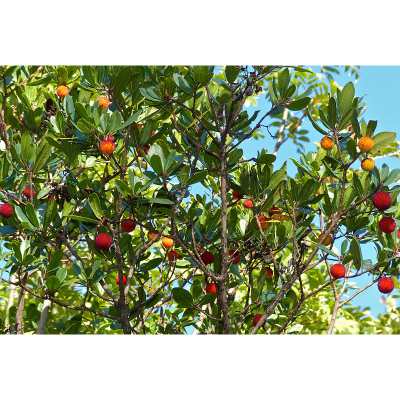
Strawberry trees (Arbutus unedo) can vary in length relying on the cultivar and growing conditions. However, maximum strawberry trees grow to a top of 8-18 ft (2.5-2.5 meters) and a width of eight-20 toes (2.5-6 meters). Some strawberry trees can end up a lot taller, as much as 50 ft (15 meters) tall.
The growth fee of strawberry trees is slow, so it may take many years for them to reach their full length. Strawberry trees will develop large in hotter climates with well-drained, acidic soil. They may also grow large in full sun or partial shade, even though they can tolerate greater shade in warmer climates.
Here are a few pointers for developing a massive strawberry tree:
- Plant the tree in a properly-tired, acidic area.
- Water the tree often, specifically for the duration of the first year after planting.
- Fertilize the tree within the spring with a balanced fertilizer.
- Mulch across the tree to assist retain moisture and suppress weeds.
- Prune the tree as needed to eliminate lifeless or diseased branches and to maintain its preferred shape.
With right care, your strawberry tree can end up a large and exquisite tree with a purpose to provide you with years of enjoyment.
Factors that affect the size of a strawberry tree
A number of factors can affect the scale of a strawberry tree (Arbutus unedo), together with:
- Climate: Strawberry bushes decide on mild climates with heat summers and funky winters. They can tolerate a few frost, but they may be now not as cold-hardy as some different trees.
- Soil: Strawberry trees prefer nicely-drained, acidic soil. They will now not develop properly in heavy clay soil or soil that is poorly tired.
- Sunlight: Strawberry trees need complete solar or partial color to produce the maximum fruit. However, they can tolerate extra shade in warmer climates.
- Water: Strawberry timber need ordinary watering, especially at some point of the primary year after planting. However, they’re drought-tolerant once set up.
- Cultivar: Some strawberry tree cultivars are smaller than others. For example, the ‘Compacta’ cultivar is a dwarf variety that grows to a peak of 6-10 toes (2-3 meters) and a width of 6-10 feet (2-3 meters). The ‘Elfin King’ cultivar is a contorted, dwarf range that grows to a top of four-6 ft (1.2-1.8 meters) and a width of 4-6 feet (1.2-1.8 meters).
- Fertilizer: Strawberry timber do now not require lots of fertilizer, however they may gain from a mild utility of balanced fertilizer within the spring.
- Pruning: Pruning is not important for strawberry bushes, but it can be used to manipulate their size and shape. Pruning should be executed in the overdue iciness or early spring, before the new growth begins.
- Pests and sicknesses: Strawberry timber are extraordinarily immune to pests and sicknesses, but they can be susceptible to a few problems, together with fungal illnesses and scale insects. If you be aware any signs of pests or diseases, it’s far vital to treat the tree promptly.
Here are some extra tips for growing a large strawberry tree:
- Choose a cultivar this is known to develop large.
- Plant the tree in a well-drained, acidic vicinity in full sun or partial colour.
- Water the tree often, particularly for the duration of the first yr after planting.
- Fertilize the tree within the spring with a balanced fertilizer.
- Mulch across the tree to assist hold moisture and suppress weeds.
- Prune the tree as needed to put off dead or diseased branches and to keep its desired form.
- Protect the tree from pests and diseases.
With proper care, your strawberry tree can come to be a large and beautiful tree a good way to provide you with years of amusement.
Strawberry Tree Cultivars and Their Sizes
Strawberry bushes (Arbutus unedo) are popular decorative and fruit trees which might be regarded for his or her beautiful purple fruit. Strawberry timber come in loads of cultivars, every with its personal precise length and characteristics.
Here are a number of the maximum popular strawberry tree cultivars and their sizes:
| Cultivar | Height | Width | Image |
|---|---|---|---|
| Arbutus unedo ‘Compacta’ | 6-10 feet (2-3 meters) | 6-10 feet (2-3 meters) | |
| Arbutus unedo ‘Elfin King’ | 4-6 feet (1.2-1.8 meters) | 4-6 feet (1.2-1.8 meters) |
|
| Arbutus unedo ‘Rubra’ | 10-15 feet (3-4.5 meters) | 10-15 feet (3-4.5 meters) |
|
| Arbutus unedo ‘Oktoberfest’ | 8-10 feet (2.5-3 meters) | 8-10 feet (2.5-3 meters) |
|
| Arbutus unedo ‘Marina’ | 12-15 feet (3.7-4.5 meters) | 12-15 feet (3.7-4.5 meters) |
|
In addition to these cultivars, there are many other strawberry tree cultivars to be had. Some cultivars are recognized for his or her big length, while others are acknowledged for his or her dwarf length. There are also cultivars which have different leaf shades and fruit colorations.
When selecting a strawberry tree cultivar, it’s far crucial to do not forget the size of the tree at adulthood and the favored growing situations. It is also important to select a cultivar this is proper to the weather where the tree can be planted.
Here are a few tips for selecting the right strawberry tree cultivar:
- Consider the scale of the tree at adulthood. Some strawberry tree cultivars can grow to be quite huge, at the same time as others are dwarf sorts.
- Choose a cultivar this is suited to the developing conditions. Strawberry trees select well-tired, acidic soil and complete solar or partial coloration.
- Select a cultivar that is applicable to the climate. Strawberry timber are hardy in USDA zones 7-10.
- Consider the favored characteristics of the tree. Strawberry tree cultivars have distinctive leaf hues, fruit shades, and increase habits.
With proper care, any strawberry tree cultivar may be a lovely and worthwhile addition to the panorama.
Pruning and Shaping a Strawberry Tree
Strawberry trees do now not require lots of pruning, however they can be pruned to govern their length and form. Pruning ought to be done inside the late winter or early spring, before the new growth begins.
Here are a few guidelines for pruning a strawberry tree:
- Remove any lifeless or diseased branches.
- Remove any branches which can be crossing or rubbing towards each different.
- Remove any suckers arising from the bottom of the tree.
- Trim returned the suggestions of the branches to inspire branching and a more compact boom habit.
- To shape a strawberry tree, you can use pruning shears or a saw to cut the branches to the preferred period and form. You can also use wire cutters to take away any unwanted branches.
Conclusion
Strawberry trees are stunning and adaptable trees that may be a precious addition to any panorama. With right care, strawberry timber can offer years of amusement.
We have discussed about strawberry tree, size, growth rate, height, width, spread, factors affecting size, cultivars, pruning.

